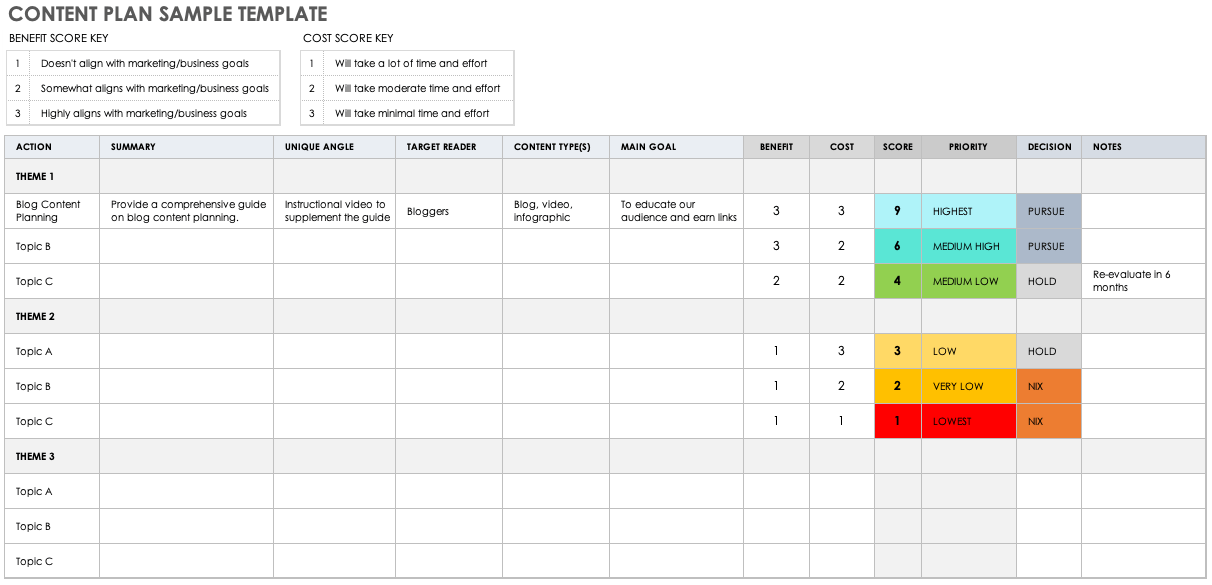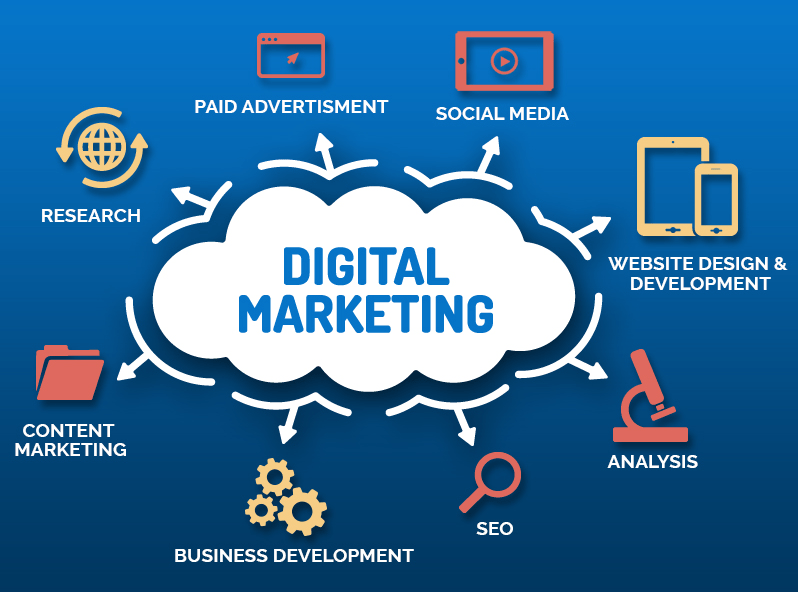In the online age where everyone prefers to shop online, businesses around the world have revolutionized everything from billboard advertising to digital advertising.
Digital marketing is not only a trending marketing tool, it is the most effective form of marketing ever invented. And the results are very clear.
With the help of digital marketing, businesses have overcome the limitations of marketing and discovered the enormous benefits of online leads.
Digital marketing is so much more than eye-catching. It is a marvel of advanced technology that has helped businesses around the world thrive.
But this leads us to the question, how does digital marketing actually work? What are the mechanics and key elements behind the marketing surprise?
We will answer your questions in this article and help you figure out what the tip of the iceberg is.
Let’s start with defining digital marketing.
Table of Contents
What is Digital Marketing?
Digital marketing is a tool to achieve business goals with the help of digital platforms by promoting the products or services of the business. The term has been extremely popular for years and is now the most commonly used term everywhere, including small and large businesses.
Some of the most popular strategies of digital marketing are:
- Search Engine Optimization (SEO)
- Pay-per-click Advertising (PPC)
- Website marketing
- Content marketing
- Social Media Marketing (SMM)
- Email marketing
- Affiliate Marketing
Online advertising comes in many forms. Knowing the set of digital tools you need to use for your specific business will help you plan accordingly and reach your marketing goals effectively.
So, what is a digital marketing and why do you need a strategy for it? “Digital marketing strategy” is a very broad term. Dealing with it on your own is so much more. That’s why we’ve created this practical guide to help you create a solid digital marketing strategy in 7 clear steps:
How does digital marketing works step by step?

Digital marketing typically works in 7 steps: those are
1. Assess your current digital marketing presence
2. Understand the Digital Sales Funnel
3. Create a buyer persona
4. Identify your customers in the funnel
5. Create a content plan
6. Analyze the results
Here are the basic steps to create a robust digital marketing strategy for your brand:
1. Set a goal

Before you start strategizing, you need to ask yourself what you want to achieve with your marketing strategy. Sounds simple, but for this step, you need to come up with very detailed and specific goals.
SMART is a very helpful and commonly used memory tool for setting goals. SMART provides the following criteria for setting goals:
To do this, you can use the SMART criteria.
- Specific
- Measurable
- Attainable
- Relevant
- Time-bound
2. Assess your current digital marketing presence
Even if it does not exist, it is good to understand what you have already achieved. This step will help you understand what to focus on to achieve your current goals.
First, you need to understand your major marketing channels:
- Your website
- Social media
- Email marketing
- Content Marketing/SEO
- Pay for each click ad
- Which of the following gives you the most leads and traffic? Rank each channel and specific
- media from the most influential to the least influential (so far).
3. Understand the Digital Sales Funnel
The Digital Sales Funnel is a journey that your buyer makes from a stranger to a repetitive or long-term customer. A brand with a strong digital presence can use funnels to achieve its digital marketing goals. How? By solving each step of the funnel with the appropriate digital marketing tools.

Understanding the digital sales funnel means you need to understand each step of the funnel and the appropriate digital tools that operate it.
Here is a simplified analysis of the steps and appropriate digital marketing responses.
Awareness
Educate potential customers about your presence. For example, through advertising on social media or through good rankings in search engines.
Interest
Increase interest in your brand. Who are you and what sets you apart from your competition? Some common digital tools for this step are the features of your brand in digital publications and videos.
Engage
Strengthen your relationships. Sponsored posts on social media that address client concerns or encourage them to ask questions are a great tool for this step.
Action
Do business with clients. Implement a call-to-action for the client to purchase a tool for this step. For example, promoting purchases by offering discounts on advertisements or emails for clients.
4. Create Buyer Persona

You need to know who your audience is before you can successfully try to reach them. So how do you understand who your audience is?
Put yourself in your customer position. Once you have guessed who a person is, you can make some guesses about what they will like. Also, learn about data management platforms.
Create article: Where does this person shop? What does this person read? On which marketing channels can you find them?
Is specific. What do they want? What are their priorities? How can you meet (or exceed) their expectations?
Customer Example: Trevor, 26, values experiences on topics. He has no car. He is an “expressionist” who likes to buy exclusive items and does not like to look like everyone else.
Do your research using analytics services.
To continue with this step, see our post:: How to create a user person.
5. Identify your customers in the funnel
Then you need to identify your customers at different stages of the funnel. At all stages of the funnel, there will be more customers who are ready to interact with you.
For example, suppose your product is organic deodorant. Your potential customer may be:
Someone who searches for organic deodorants on Google and finishes reading the article will show it to you.
Anyone who wants to buy organic and non-organic deodorant and see your sponsored Facebook post about how your deodorant is made from compostable packaging.
Some people who have already purchased your deodorant and you are now participating in an email campaign with the option of buying your deodorant at a discounted price.
Once you have this information, you can start targeting different groups of users through different channels.
6. Create a content plan

At this stage, you will develop a specific marketing strategy for each channel that will attract your customers. What kind of content do you need for each of these channels to achieve your digital marketing goals?
Your strategy is designed with a series of actions that respond to specific goals. It also has a specific time frame so that the actions have a scalable time frame.
Some of these actions are:
- Developing Keyword Strategy: Identifying keywords to improve SEO.
- Creating Content Calendar: It allows you to achieve long-term and easily identifiable goals. Your content calendar is very specific. Each action item contains the author, date of publication, keywords, subject, and possible tags (at least).
- Digital marketing should be the goal every month. For example, from January, you will display two weeks of posts on a specific topic on your blog.
- Posting on social media: Use the research you do to determine what kind of content you should post on which social media channel and how often you should do it.
- Using CTAs and Widgets: It is important to include CTAs and widgets in your digital marketing materials to make it easier for customers to engage with you and your products.
- Marketing Automation Tools: Once you have your content strategy, these tools are a great way to save time and be effective.
7. Analyze the results

Once you have the strategy, practice this step at intervals (add it to your calendar). How do customers interact with what you share with them? How are you moving towards your goals? These analyzes can help you in the right course and learn from things that do not work as planned.
You can view your progress through the various stages of the funnel using Analytics software. You want to understand:
If clicks are converted. Is there mobility in the funnel? Why or why not?
If there is any point where you miss an engagement with customers. What is the cause and how can you fix it?
Which works well and which does not.
Keep up with the latest digital marketing tools, there may be new ones on the market that will definitely meet your analytics needs.
You can use data visualization tools to create graphics that help with the results you collect, comparisons, goal tracking, and presentations.
Final Thoughts
Focus on your goals and the specific steps that will get you there
You may have noticed that there are two keywords that you need to live by goals and specifications to build a strong foundation for a successful digital marketing campaign. Create clear goals and describe the specific steps you need to take to get there — the more specific, the better!
And now that you are armed with this guide, you can dive deeper and learn more about the different types of digital marketing and what everyone can do for your brand.
Hope! You find this article interesting. If so, don’t forget to share and leave comments. Thank you.





